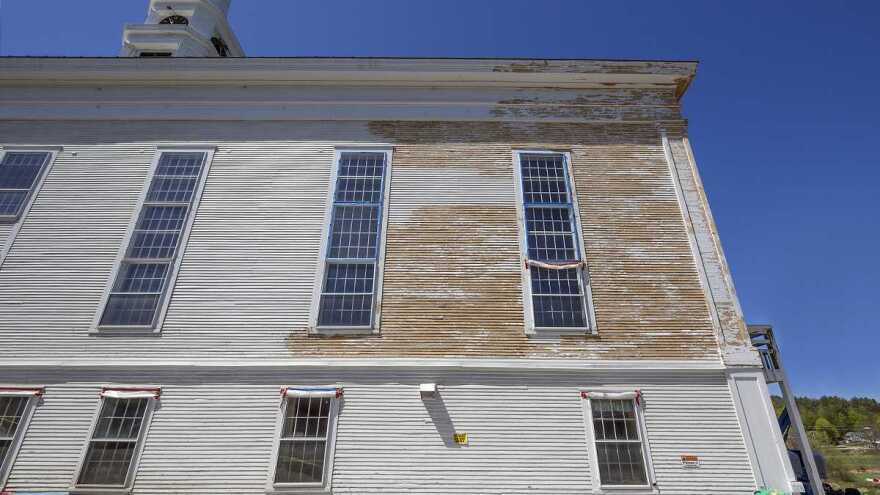When David Rosner was a kid, he'd go into his grandfather's garage and mix up cans of paint.
"I can still remember just sticking a stick in to mix it up and hitting halfway down a solid mass of hard stuff," said Rosner. "That was lead."
Today, Rosner is a professor of public health at Columbia University and the co-author of Lead Wars: The Politics of Science and the Fate of America's Children. He's well aware of the danger contained in that can of paint.
Lead poisoning
Exposure to lead, through dust and chipping paint, can cause permanent developmental delays in children under the age of six.
"It became apparent in the 1970s, children who had lead in their blood did substantially worse on various kinds of neurological tests, IQ tests, behavioral tests and also worse in school," said Rosner.
Based on that evidence, lead was banned as an ingredient in paint in 1978. Seventy percent of Pennsylvania's current housing stock was built before then, meaning there are a lot of homes with lead paint on the walls.
If that paint is covered over with non-lead paint and maintained diligently, you can safely live in a home with lead on the walls. The issue comes when there's chipping or peeling paint, or dust from renovation work. An adult can inhale some lead dust without consequences, but children under the age of six, and their developing brains, are at much higher risk.
"What we've created is this time bomb," says Rosner. "Anytime there is a leak, or the paint starts to peel, or you hammer a nail into the wall and dust is created, you can poison a child."
Cases of lead poisoning have declined statewide for many years. But in 2014, there were still more than 13,000 children with elevated blood lead levels, according to the Department of Health. The Department of Health received test results from 14 percent of children in the state.
Finding funding
We've had 40 years to remove or permanently encapsulate all of that lead paint. But that hasn't happened.
For Vicky Kistler, the director of the Allentown bureau of health, it's a matter of funding. Many homeowners can't afford remediation, which can cost thousands of dollars.
"We've had landlords shutter up the building. The lead abatement could actually be more costly than the value of the property," said Kistler. "We've had homeowners sell their home. They can't do the abatement and then they have to disclose it has lead, so it would be difficult to resell."
Over the years, Pennsylvania has helped finance remediation through a hodgepodge of federal grants. But that money has recently dried up.
The EPA stopped providing Lead Poisoning Prevention grants in 2010. HUD did not renew a grant the state had received, and distributed to four cities and a county, since 2000. And when Pennsylvania decided to apply to the CDC on behalf of local health departments, which historically had applied directly, they failed to win the grant.
Individual cities across the state still receive funding, particularly from HUD.
The state now puts $2 million a year towards help with lead hazards, according to state Health Secretary Karen Murphy.
"We have a hotline people are able to call in and we provide electronic materials or counseling," said Murphy. "We also have community health nurses. When they get the reported elevated lead levels, they begin case management with children. It's also really to educate people on how the elevated lead levels occur."
Right now, state funding focuses on education, rather than remediation. So unless a child's lead levels are extreme, local health departments offer interim solutions.
"We actually deliver them cleaning supplies," said Kistler. "We tell the parent to wash the child's hands more frequently, wash the toys, keep the floors and windowsills clean. We work with that family and the pediatrician to try to implement that plan of action, and then retest and see if the levels go down."
That can work. But it also means that lead paint remains on the walls until the next family moves in and starts the process all over again. It's not surprising that we've gone 40 years and still have cases of lead poisoning across the state.
"There isn't enough money in the world to remove all the lead we have in our communities," says Kistler.
Where's the industry?
Rosner says society has been paying this bill for 40 years.
"If the state is setting up programs, if cities are setting up programs, if the federal government has programs, if children are paying the price, if schools are being forced to get Special Ed teachers, everyone is paying for the cost of what the industry did, except the industry itself," he said.
But that could be changing: Rosner has testified in lawsuits against lead paint companies — now, just paint companies — like Dutch Boy, Conagra and Sherwin-Williams. In 2008, a judge ruled they had to give Rhode Island $4 billion worth of lead remediation funding. That decision was struck down in appeal.
But in 2013, another case was won: a group of California cities were awarded $1.1 billion for the same purpose. The paint companies appealed that decision as well, and it's still in court. If the industry ends up paying, that could set a precedent for other states to try the same.
Find more on lead and other stories on the website of our partner Keystone Crossroads.




